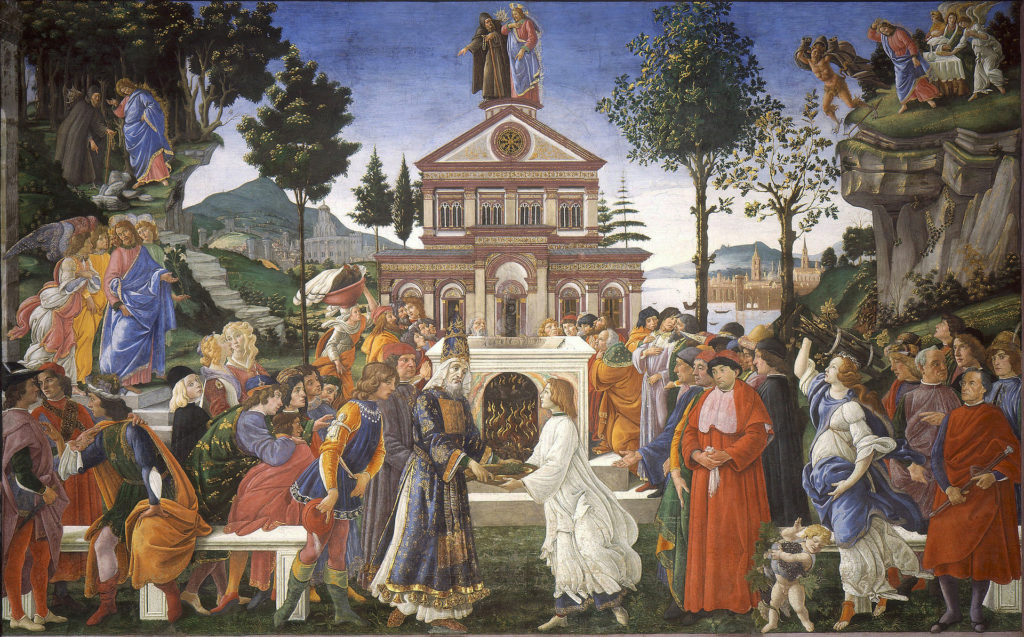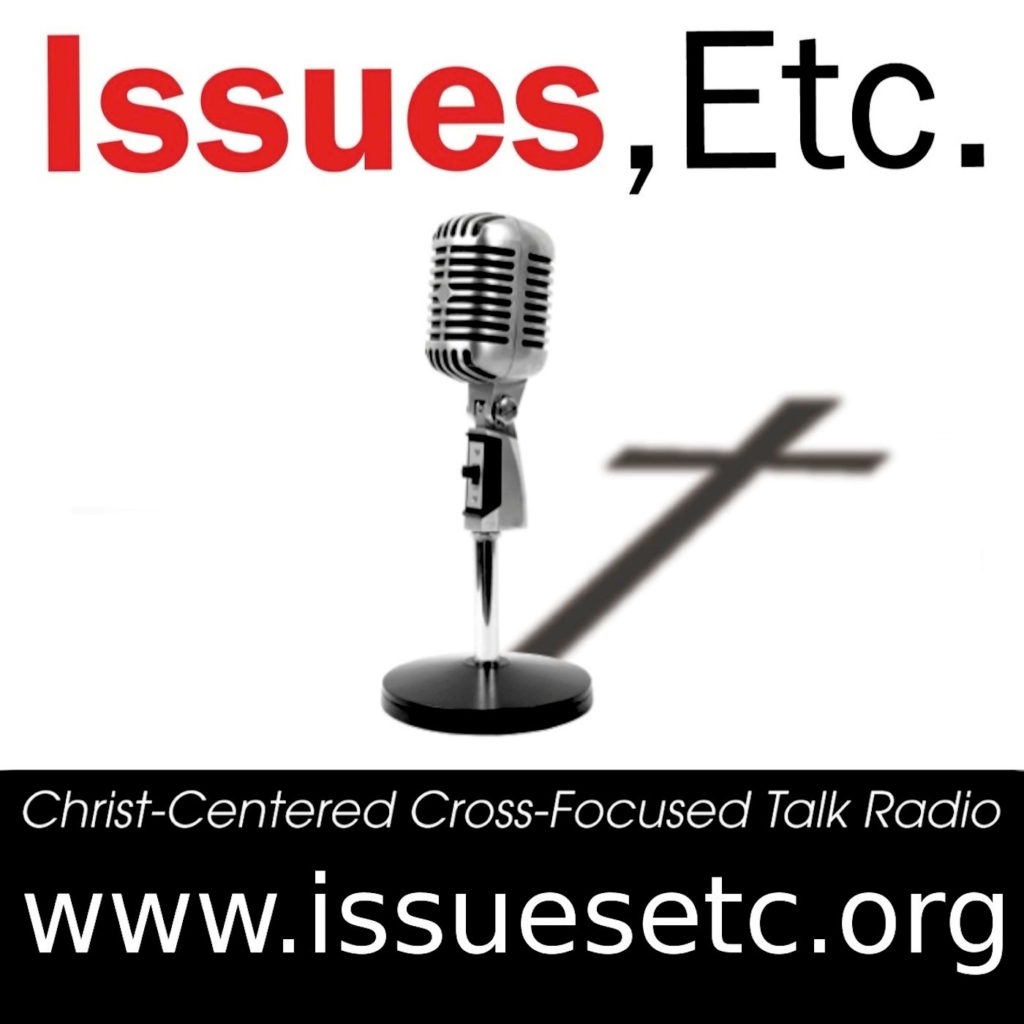He Will Command His Angels

By Invocabit Sunday, the Lenten season is officially upon us. During Pre-Lent, the Church comes down from the heights of Christmas and Epiphany and settles into this period of the church year primarily marked by mankind’s repentance and a reflection on our intensified struggle with the flesh and earthly powers.
Just as in Advent, each Sunday in Lent receives its name from the first word(s) in the introit. So “Invocabit” comes from the long-standing proper for the day, Psalm 91: “When he calls to me, I will answer him; I will rescue him and honor him. With long life I will satisfy him and show him my salvation.”
But Invocabit Sunday is also known by another special name–Quadragesima. Recall that Lent is immediately preceded by Gesimatide in which we have Septuagesima, Sexagesima, and Quinquagesima Sundays, so named because they each fall approximately seventy, sixty, and fifty days before Easter, respectively.
Quadragesima, meaning forty, comes next in the sequence and is another nickname for Invocabit. But to make things a little complicated, Quadragesima can also denote the entire Lenten season because it is roughly a forty-day-long period.
The Lenten Pilgrimage
The theme for Invocabit Sunday is in some sense a preview of the entire Lenten pilgrimage, reflected in the Gospel reading, which describes our Lord’s own forty-day trial in the wilderness (Matthew 4). As one source puts it, the task of this Sunday and the whole Lenten season is this: “to prepare for a truly Christian life, to have God sanctify our heart and cleanse it of self-love and sin.” As we hear of our Lord’s own temptation in the wilderness, we are reminded of our need for his assistance as we struggle against our own temptations.
Furthermore, the Lenten season often features an increased focus on the disciplines of prayer, fasting, and almsgiving. We pray that through these practices, we would be shaped into Christians who follow in our Lord’s way not just in this season but throughout our lives.
The rest of the Sundays in Lent also remind us of these disciplines. On the Second Sunday of Lent, Reminiscere, we hear the Gospel reading of the Canaanite woman (Matthew 15) and are reminded to pray, asking God that our enemies would not triumph over us but that the Lord would remember us in mercy despite our weakness.
Oculi Sunday brings Jesus’ charge that “whoever is not with me is against me” (Luke 11:23) and was historically the “day of decision,” when catechumens were required to choose whether they would stand with the Christ or with the world.
On Lætare Sunday, the Church year gives us a brief respite in the middle of the Lenten journey where our Lord offers a heavenly meal and invites us to rejoice in his salvation.
Judica, the Fifth Sunday of Lent (also called Passion Sunday), brings us to the two weeks preceding Easter known as Passiontide.
Palmarum, or Palm Sunday, is the last Sunday of Lent and the gateway to Holy Week as our Lord enters Jerusalem.

Brief History
The whole Lenten season is rich in history and tradition, with the historic Sunday readings dating back to a time even earlier than St. Gregory the Great’s rule in the sixth century. We know that Christians have fasted and observed special times of prayer and almsgiving ever since the time of the apostles. Thus, the practices that accompany Lent have largely emerged from this foundation and have developed bit by bit throughout the history of the Church.
Some of these practices that accompany Lent are additional prayer services, individual confession and absolution, and almsgiving. Many of us still see modern-day versions of these traditions when churches still offer Wednesday Lenten services and take up special collections for those experiencing great need and financial difficulties.
Another historic Lenten practice that is often less known is the tradition of fasting. In the early centuries of the Church, a strict fast from Good Friday to Easter morning was observed. Later, the fast was extended to include the week leading up to Easter (Holy Week), then to two weeks (Passiontide). Eventually, it was standardized as a forty-day period meant to reflect our Lord’s wilderness fast. This is in part what ties fasting back to the Invocabit texts and theme of Jesus’ trial in the wilderness.
Yet now in our own day and age, the Church’s tradition of fasting has been largely neglected, meaning that a person might not know how to start fasting or might not even consider fasting an important discipline for their own life.
That is in part why we wrote this post on our “liturgical basics” page, to offer some more background and guidance on the topic. Of course, we think that is always good to talk with one’s pastor about such things and to consider the reasons why one might decide to fast during Lent. Further, if fasting feels overwhelming or uncertain, we can be encouraged by the words of St. John Chrysostom, who tells us that our Lord is gracious and that a person should not be too hard on himself if he cannot go days without food or start a Lenten fast without proper preparation.
No matter how you choose to mark the shift to Lent in your households, one thing is for sure: the Lenten disciplines (fasting, prayer, and almsgiving) all work so nicely together. Fasting makes time for prayer and saves money, which can then be given away; prayer occupies you while fasting and encourages you in your giving; and almsgiving points back to the love and mercy that Christ has first demonstrated to us.
In these ways we can join our Lord and his Church together in our Lenten journey.

Collect
O Lord, mercifully hear our prayer: and stretch forth the right hand of Thy majesty, to defend us from them that rise up against us; through Jesus Christ, Thy Son, our Lord, who liveth and reigneth with Thee and the Holy Ghost: ever one God, world without end. Amen.
Lessons
Resources
Invocabit pretzels recipe
Issues, Etc. interview with the Rev. David Petersen on Invocabit
Propers found in Daily Divine Service Book: A Lutheran Daily Missal, edited by the Rev. Heath Curtis
References:
1. Pfatteicher, Philip H. Journey into the Heart of God. Oxford University Press. 2013.
2. Weiser, Francis X. Handbook of Christian Feasts and Customs: The Year of the Lord in Liturgy and Folklore. Harcourt, Brace & World, Inc. 1952.
3. Lindemann, the Rev. Fred H. The Sermon and The Propers, Volume II: Pre-Lent to Pentecost. Concordia Publishing House. 1958.
Images:
1. Angels serve Christ with food after his ordeal in the wilderness, Charles le Brun, France, n.d.
2. Temptations of Christ, Sandro Botticelli, Italy, 1480–1482.
3. Temptation on the Mount, Duccio di Buoninsegna, Italy, 1308-1311.
Some links might be affiliate links which means we may receive a small commission at no extra cost to you. As an Amazon Associate we earn from qualifying purchases.





This was an excellent article. Thank you for sharing it with us.